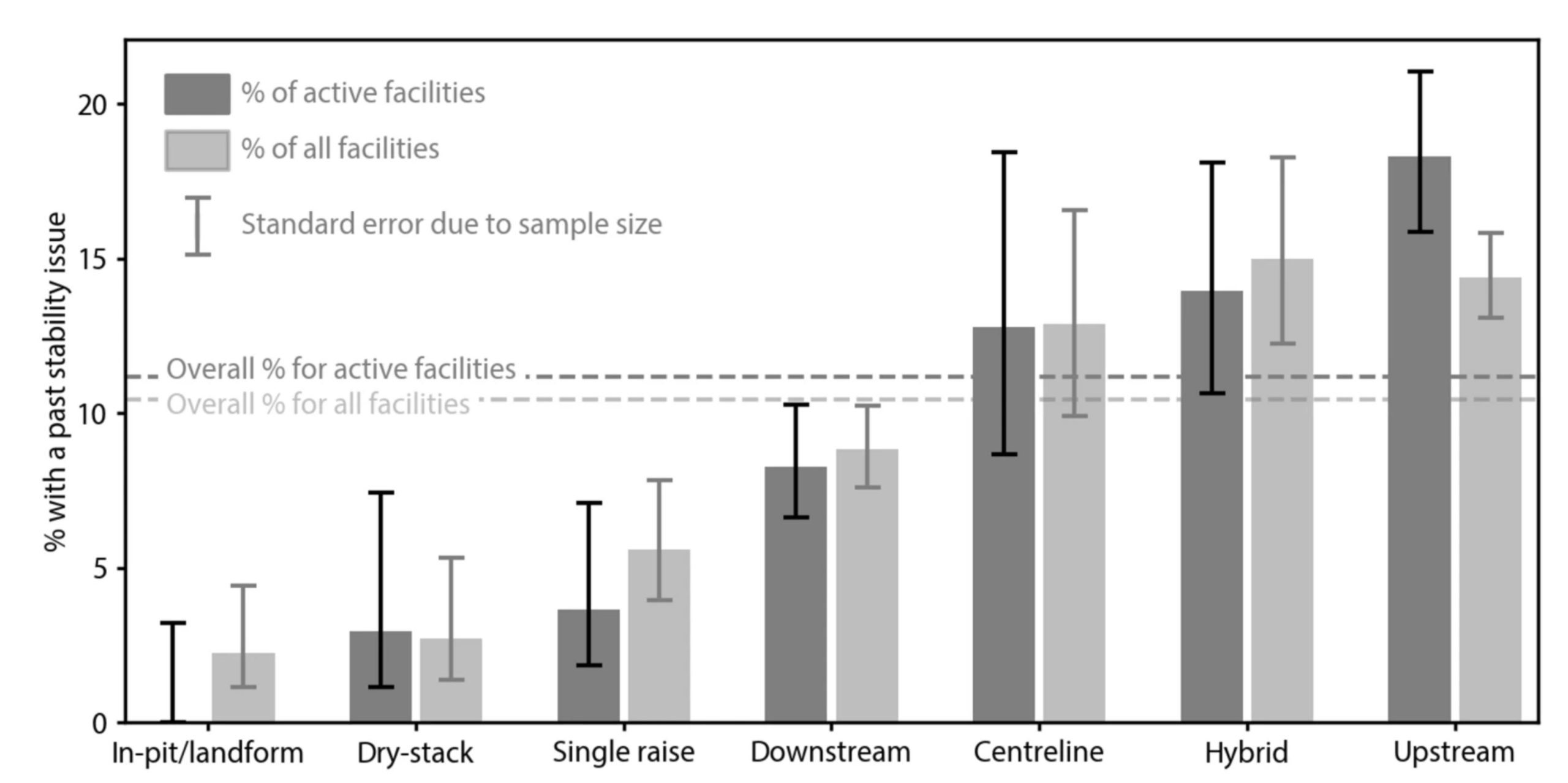12 March 2021
The stability of mine waste tailings facilities
Posted by Dave Petley

The aftermath of the Brumadinho tailings failure in Brazil. Image via Google Earth.
The stability of mine waste tailings facilities
In recent years there has been a sequence of major failures in mine waste tailings facilities, involving loss of life, severe economic damage and environmental catastrophe. As global mining continues to expand there are major concerns about the likelihood of further major failure events, although the industry would maintain that there are serious efforts ongoing to improve tailings management.
A really interesting paper has just been published in the journal Scientific Reports (Franks et al. 2021), which is available open access, which reports upon a database of tailings facilities worldwide. This database has been compiled through requests for disclosures from mining companies. They requested information on tailings facilities from 726 publicly-listed extraction companies. In total, 107 companies responded. The authors recognise that this has limitations, but the results are still eye-opening.
Franks et al. (2021) included in their request for information the following:
Companies were requested to disclose any situation where a facility, “at any point in its history, failed to be confirmed or certified as stable, or experienced notable stability concerns, as identified by an independent engineer (even if later certified as stable by the same or a different firm).”
In total, 10% of all tailings facilities were reported to have suffered a stability issue, but as the image below shows, this was much higher for the (much more risky) upstream type of tailings dam:-

Stability of tailings facilities. Proportion of facilities with a stability issue by raise type. Error bar lengths are binomial confidence intervals for the subsample represented by each bar, showing ± 1 standard error (approximately 68%). Figure from Franks et al. (2021).
.
The hazards associated with the upstream method are clear to see. Given the potential impacts of the failure of a tailings dam, the figures in this graph are alarming.
It is also notable that the authors found that:
A significant number of facilities (501; 29%) have not formally considered the downstream effects of a hypothetical catastrophic failure
This is a remarkable finding.
The authors note that their database accounts for only about 30% of global commodity production. I think one can hypothesise that the companies that have made a disclosure are more likely to be managing their facilities properly. If so, the global picture is probably even worse than the figure above suggests.
I cannot sum up the implications of this piece of work better than Franks et al. (2021) themselves:
The sheer scale of global tailings production and the high impact of tailings facility failures highlights the need to improve all aspects of tailings disposal and management. Furthermore, the data highlight the need to continue developing management options and technologies to both minimize tailings production and to repurpose tailings to reduce storage requirements and their associated risks. In the short term, the data suggest that ever larger tailings storage facilities will continue to be built in locations with ever higher consequences of failure. Greater transparency brought about by these and future disclosures could play an important role in the reduction, and ideally elimination, of catastrophic tailings facility failures.
This paper is a good start, and a very valuable contribution, but the industry has a long way to go.
Reference
Franks, D.M., Stringer, M., Torres-Cruz, L.A. et al. 2021 Tailings facility disclosures reveal stability risks. Scientific Reports 11, 5353 (2021). https://doi.org/10.1038/s41598-021-84897-0.


 Dave Petley is the Vice-Chancellor of the University of Hull in the United Kingdom. His blog provides commentary and analysis of landslide events occurring worldwide, including the landslides themselves, latest research, and conferences and meetings.
Dave Petley is the Vice-Chancellor of the University of Hull in the United Kingdom. His blog provides commentary and analysis of landslide events occurring worldwide, including the landslides themselves, latest research, and conferences and meetings.
British Columbia is a major mining province in Canada.
Following the breach of the Mount Polley tailings storage facility in 2014 an Independent Expert Engineering Investigation and Review Panel was established to report ( Jan.30,2015 ) on the failure. Quoting from the appendices they stated:
“the failure frequency of 1.7*10-3 for BC tailings dams is about twice the benchmark value of 7.6*10-4 for western U.S. water dams. ” They pointed out that the failure frequency over the period from 1969-2015 for BC of 1.7*10-3/dam-year applies to the reference population of tailings dams, and not to any one in particular. It could be seen as the probability of failure for a typical or “statistically average” dam in the population.